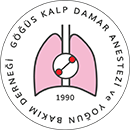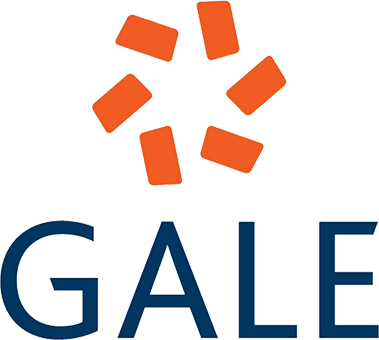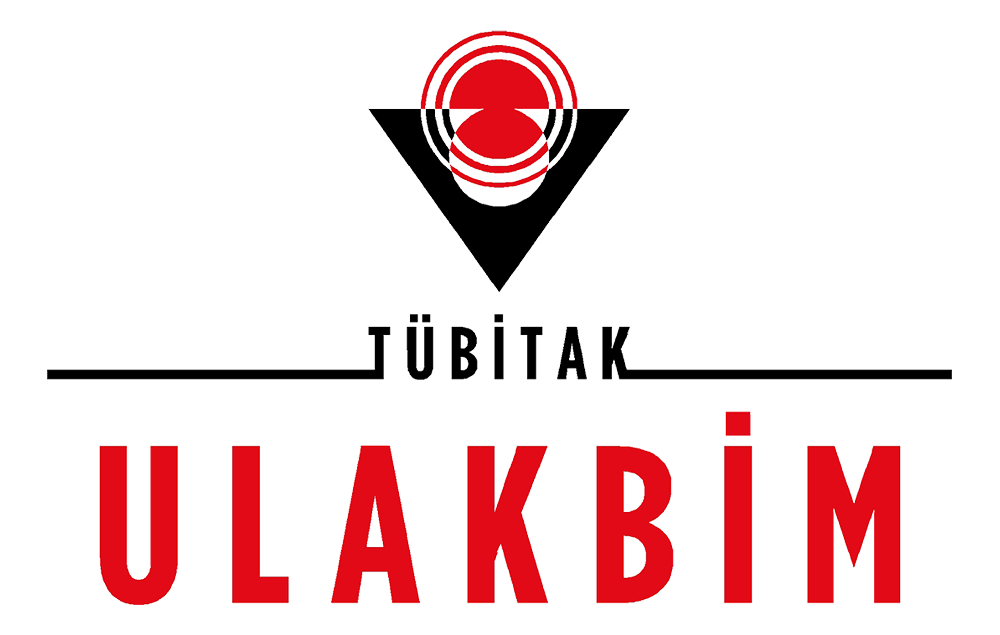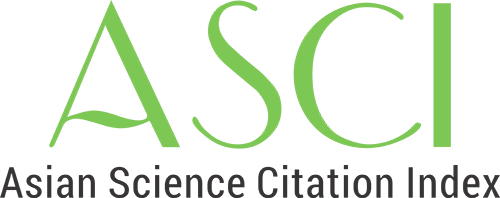

Volume: 27 Issue: 1 - 2021
| 1. | Cover Page I (491 accesses) |
| 2. | Editorial Consultants Pages II - III (576 accesses) |
| 3. | Contents Pages IV - V (484 accesses) |
| 4. | Publication Policies and Writing Guide Pages VI - XII (438 accesses) |
| REVIEW | |
| 5. | The Importance of Extravascular Lung Water Measurement in Major Surgeries Baturay Kansu Kazbek, Perihan Ekmekçi doi: 10.5222/GKDAD.2021.04935 Pages 1 - 13 (1258 accesses) The incidence of postoperative pulmonary complications varies between 1-23 % and these complications can cause serious mortality. Measurement of extravascular lung water (EVLW) is beneficial not only for the prevention of complications but also in weaning, fluid management and monitorization of response to pharmacological interventions. EVLW consists of interstitial, intracellular, alveolar and lymphatic fluid in lungs except for pulmonary vasculature. Its normal range is 3-7 m/kg in healthy adults, values greater than 10 ml/kg point to pulmonary edema. Although the gold standard for measurement of EVLW is the gravimetric method, due to the fact it can only be applied postmortem, measurement methods by using ultrasonography and transpulmonary thermodilution have been developed. EVLW measurement can be affected by renal replacement therapy, extracorporeal membrane oxygenation (ECMO), pleural effusions and high PEEP. New research focusing on the effect of EVLW measurement on postoperative hemodynamic management is necessary in the future. |
| RESEARCH ARTICLE | |
| 6. | Ultrasound-Guided Transverse Thoracic Muscle Plane Injection vs. Topical Spraying of Papaverine for LIMA Harvesting: A Pilot Study Muhammed Enes Aydin, Sümeyye Al, Ahmet Murat Yayik, Ugur Kaya, Abdurrahim Colak doi: 10.5222/GKDAD.2021.54154 Pages 14 - 20 (1228 accesses) INTRODUCTION: Although the effect of topical papaverine on the left internal mammary artery (LIMA) flow is a well-known method, papaverine hydro dissection is applied to the transverse thoracic muscle plane is unknown. This study aims to investigate the effect of ultrasound-guided transverse thoracic muscle plane papaverine injection on LIMA flow. METHODS: ASA II-III, 40 patients who underwent coronary artery bypass grafting surgery, were randomly divided into two groups. Group topical papaverine (Group TP, n=20) and Group ultrasound-guided papaverine (Group USP, n=20). In Group TP, 10 mg papaverine in 10 mL saline was administered topically after LIMA harvesting. In Group USP, ultrasound-guided transverse thoracic muscle plane papaverine injection with the same solution preoperatively. Trans-time flow measurements (TTFM), LIMA harvesting time, and surgeon satisfaction were recorded. RESULTS: There was no difference in LIMA free flows before anastomosis between Group USP and Group TP (111.35±69.76 vs. 92.15±46.76, respectively, p=0.185). There was no significant difference between the groups in TTFM values evaluated after anastomosis (p> 0.05). LIMA harvesting time was statistically shorter in Group USP than Group TP (13.90±3.01 vs. 16.65±4.50 respectively, p=0.049). Surgeon LIMA harvest satisfaction was statistically significantly higher in group USP (p=0.029). DISCUSSION AND CONCLUSION: We think that papaverine injection via ultrasound-guided transverse thoracic muscle plane may be an alternative method to topical application to prevent LIMA spasm. |
| 7. | Comparison of Standard Endotracheal Tube and Endotracheal Tube with Subglottic Secretion Drainage in Patients Undergoing Open Heart Surgery; Risk of Developing Postoperative Nosocomial Pneumonia Zeki Talas, Tülay Çardaközü, Emel Azak, Sibel Gür doi: 10.5222/GKDAD.2021.36034 Pages 21 - 29 (990 accesses) INTRODUCTION: Postoperative nasocomial pneumonia (PoNP) is the pneumonia that develops 48 hours after the surgery. The risk of PoNP is 3-20 times higher when endotracheal tube (ET) was used. Therefore ETs with drainage lumens allowing subglottic secretion were produced (SSD-ET). The risk of PoNP has increased in cardiac surgery. There are limited number of studies on SSD-ET and VAP in the literature on patients under going fast-track cardiac anesthesia protocol. The aim of our study is to compare the protective effect of the SSD-ET on the extubation time and the development of PoNP in the patients having open heart surgery under going fast-track cardiac anesthesia protocols. METHODS: A prospective, non-blind, randomized trial was conducted. Patients scheduled for cardiac surgery were randomly assigned to receive Standart Tube Group (Group 1) or Subglottic Aspiration Tube Group (Group 2). 60 patients were included in the study. The diagnosis of PoNP is determined according to the diagnostic criteria of 2015 Centersfor Disease Control and Prevention (CDC)(1). A two-sided p-value <0.05 was considered as statistically significant. RESULTS: Extubation time was 12.65 h in group SSD-ET, it was revealed as 16.88 h in the S-ET group. Hence, the extubation time was significantly shorter in the SSD-ET group (<0.027) DISCUSSION AND CONCLUSION: Our study has showed that SSD-ETs decreased the extubation time in patients who underwent open heart surgery, although they did not directly affect the development of PoNP |
| 8. | The Effect of Two Different Types of Anesthesia on Postoperative Liver Functions in Patients with Coronary Bypass with Metabolic Syndrome Hülya Yiğit Özay, Aslı Demir, Melike Kaya Bahçecitapar doi: 10.5222/GKDAD.2021.63634 Pages 30 - 37 (926 accesses) Objective: One of the factors affecting liver functions in open coronary surgery (CABG) of patients with metabolic syndrome (MS) may be the anesthetic drugs used. For this purpose, we investigated the effects of midazolam-based total intravenous anesthesia (TIVA) and sevoflurane-based inhalation anesthesia on liver functions and postoperative complications in patients with MS who wiould undergo open coronary bypass surgery. Method: A total f 76 patients were included in our study. A statistically significant difference was not found between the TIVA (n=38) and SEVO (n=38) groups in terms of gender, age, body mass index (BMI), Euroscore values, presence of preoperative comorbidity, blood product transfusion, postoperative complications, and 30-day mortality rates. (p>0.05). Preoperative and postoperative laboratory parameters, ALT, AST, LDH, and glucose values were comparable between both groups. Results: 76 patients were included in our study. There was a statistically significant difference between the TIVA (n=38) and SEVO (n=38) groups in terms of gender, age, body mass index (BMI), euroscore values, presence of preoperative comorbidity, blood product transfusion, postoperative complications, and 30-day mortality rates. There was no difference (p>0.05). When compared according to preoperative and postoperative laboratory parameters, ALT, AST, LDH, and glucose values were found similar in both groups. Conclusion: In our study, we found that TIVA and SEVO groups are not superior to each other in coronary bypass patients with metabolic syndrome. Studies investigating detailed parameters with more patients will be guiding for this issue. |
| 9. | The Relation of Intraoperative Renal Oxygen Saturation Change with Postoperative Acute Kidney Injury Mustafa Emre Gürcü, Atakan Erkılınç, Pinar Karaca Baysal, Fatih Yılmaz, Tuncer Koçak doi: 10.5222/GKDAD.2021.82621 Pages 38 - 43 (901 accesses) Objective: Acute kidney injury seen in 25-30 % of the cases after open heart surgery where cardiopulmonary bypass was performed, is one of the most important factors that affect the success of the on- pump open heart surgery by increasing the rates of postoperative morbidity, and mortality. Near infrared spectroscopy (NIRS) is a noninvasive monitoring that frequently used method that allows correction of imbalances in oxygen supply to the brain and vital organs. We aimed to investigate the relationship between renal oxygen saturation values and postoperative acute kidney injury. Method: Fifty patients who underwent on- pump open heart surgery between July 2020 and January 2021 by using cardiopulmonary bypass were included in the study. Demographic data included age, gender, body mass index (BMI), hypertension, diabetes mellitus, chronic obstructive pulmonary disease, other chronic diseases and left ventricular ejection fraction. The definition of acute kidney injury was defined according to the criteria of KDIGO. At the end of the postoperative 48th hour the relationship between intraoperative renal rSO2 changes in patients with or without acute kidney injury was evaluated. Results: Fifty patients were included in the current study. The median (IQR) age of 50 patients was 62 (54.3-66.5), and mostly male patients constituted the study populatio,. When we evaluated the intraoperative data, there were statistically significant differences in changes in renal rSO2 values in patients who had and had not developed postoperative acute kidney injury (-12%, -3%, respectively) (p: 0.001). In the multivariate logistic regression analysis, the change in rSO2 values in the intraoperative period [(from - 10% to 0.5%), OR: 0.18 (0.04-0.76) p: 0.03] were found to be an independent predictor of postoperative acute kidney injury. Conclusion: We found that the decrease of renal rSO2 measurements during surgery may predict the development of acute kidney injury in the postoperative period. We think that renal oxygen saturation monitoring with NIRS is a very effective method for predicting postoperative renal dysfunction, because it is both noninvasive and reflects simultaneous data. |
| 10. | Determination of Mortality in Cardiac Surgery: Is Cardiac Surgery Scoring (CASUS) System Effective? Senem Polat, Nurgul Yurtseven doi: 10.5222/GKDAD.2021.46547 Pages 44 - 50 (1046 accesses) Objective: This study was planned to evaluate effectiveness of cardiac surgery score (CASUS) system used for the prediction of mortality after the cardiac surgery and to compare it with EuroSCORE, a tested and approved method. Method: Fifty patients over the age of 18 who came to the intensive care unit (ICU) after open heart surgery and stayed in the ICU for more than 48 hours were prospectively included in the study. After the preoperative EuroSCORE evaluation of the patients, CASUS scoring systems were used for risk scoring from postoperative 0 day to the service or up to the 6th postoperative day (or possible mortality) in patients whose stay in ICU was prolonged. We evaluated the place of both models in the prediction of ICU mortality. Results: The study was conducted with 50 patients- 21 female, 29 male-, aged between 19 and 79 years (mean age: 60.38±12.50). Five (10%) cases exited.The areas under the ROC curve were estimated as follows: EuroSCORE, 45.3%; and for CASUS 0,1, and 2. day scores AUCs of ROC curve were 66,9%, 64,7%, and 79,8%, respectively. The CASUS 2nd day score was found to be valuable in predicting mortality (p<0.01). A statistically significant relationship was observed between the days of stay in the ICU and mortality. Conclusion: Our results show that the rate of the accurate prediction of mortality of CASUS is insufficient on postop 0th and 1st day; however CASUS score on postoperative 2nd day has sufficient.predictive accuracy EuroSCORE is not found effective in the prediction of mortality. It is observed that if the duration of stay in ICU is prolonged, it statistically significantly increases the risk of mortality. |
| 11. | Neuromuscular Block Management in Tracheal Stenosis Surgery; Retrospective Evaluation Sedat Saylan, Ali Akdogan doi: 10.5222/GKDAD.2021.49403 Pages 51 - 58 (942 accesses) Objective: In the surgical treatment of tracheal stenosis, whether in long procedures such as tracheal resection-anastomosis or in short procedures such as rigid bronchoscopy and dilatation, performing a deep neuromuscular block to provide patient comfort and facilitate the surgery. In this study, neuromuscular block antagonism using sugammadex during the surgical treatment of tracheal stenosis was investigated. The aim of our study was to evaluate the antagonism of the neuromuscular block with sugammadex in cases of postintubation tracheal stenosis and posttracheostomy tracheal stenosis in terms of postoperative residual block, complications and its effect on postoperative respiratory pattern. Method: In order to evaluate the effectiveness of the anesthesia methods and neuromuscular block management procedures applied during the surgical treatment of tracheal stenosis, patient files, anesthesia record forms, early postoperative follow-up and discharge process were retrospectively reviewed. Since most of the 34 patients diagnosed with tracheal stenosis underwent more than one surgical procedure at different times, a total of 140 interventional procedures and anesthesia applications were examined. Patients who underwent tracheal stenosis surgery and used sugammadex for neuromuscular block antagonism were included in the study. Results: 34 patients were evaluated as postintubation- posttracheostomy tracheal stenosis. While rigid bronchoscopy (n = 78), balloon dilatation (n = 35) and stent (n = 5) were applied to the patients as short surgical procedures, 22 patients underwent tracheal resection-anastomosis surgery. After the use of sugammadex in short and long surgical procedures, the time to start spontaneous breathing was found to be similar. No complications related to sugammadex were identified. Conclusion: We argue that the use of sugammadex under the monitoring of anesthesia depth and muscle strength in tracheal stenosis surgery is an effective and reliable choice for neuromuscular block antagonism. |
| 12. | Our Anesthesia Experiences in the Tracheobronchial Foreign Body Aspirations of Pediatric Patients During Rigid Bronchoscopy Yiğit Şahin, Tülay Çardaközü, Hüseyin Fatih Sezer doi: 10.5222/GKDAD.2021.31032 Pages 59 - 65 (1012 accesses) Objective: Bronchoscopy is the gold standard in the diagnosis and treatment of tracheobronchial foreign body aspiration (TBFBA) in children. Rigid bronchoscopy (RB) under general anesthesia is generally preferred in children. In this article, our anesthesia experiences during rigid bronchoscopy performed for tracheobronchial foreign body aspiration and removal of foreign bodies in children are shared. Methods: The medical records of all patients aged between 0-18 years who underwent RB under general anesthesia due to suspicion of TBFBA between January 1, 2014 and December 31, 2018 were retrospectively analyzed. Results: TBFBA was more common in boys and organic foreign body aspiration was significantly higher in patients between 13-36 months of age. Patients most frequently presented with cough and wheezing. Most of them were operated between 8 am and 4 pm. TFBs were localized in the right and left main bronchi at a similar rate. Anesthesia induction was usually achieved with iv. propofol, total intravenous anesthesia and sevoflurane inhalation was administered for maintenance of anesthesia. Except for proximally located TBFBs, intermediate-or short-acting muscle relaxants were applied to most of the cases depending on the duration of the procedure. Three patients were intubated postoperatively and transferred to intensive care unit. Respiratory distress responded to medical treatment in 25 patients. No cardiac arrest or death occurred during the procedure. Conclusion: RB and anesthesia procedure for TBYCA requires experience. There is no clear recommendation about premedication, the use of muscle relaxants should be evaluated according to the localization of TBYC. In anesthesia management, intravenous or inhalation anesthetics can be used. |
| 13. | The Impact of Videothoracoscopic Sympathectomy on Quality of Life in the Treatment of Primary Hyperhidrosis: A Single Center Experience Hüseyin Fatih Sezer, Aykut Eliçora doi: 10.5222/GKDAD.2021.94940 Pages 66 - 73 (703 accesses) Objective: In our study, we aimed to reveal the change in the level of quality of life in patients who underwent videothoracoscopic sympathectomy due to hyperhidrosis. Methods: Data of 40 patients who were treated with videothoracoscopic sympathectomy for primary hyperhidrosis were analyzed retrospectively. The Turkish version of the The Hyperhidrosis Quality of Life Questionnaire (HQLQ) was used in the assessment of the quality of life. Results: The mean total questionnaire scores before the operation was 82.08±1.46, 31.40±0.59 at the first month after the operation, and 31.30±0.46 at the first year after the operation. While a statistically significant difference was found between the pre-operative total survey score averages and the postoperative 1st month and 1st year survey score averages (p<0.001, p<0.001, respectively),a statistically significant difference was not detected between total score averages of the postoperative 1st month and 1st year (p=1.00). Conclusion: Videothoracoscopic sympathectomy method used in the treatment of primary hyperhidrosis is an effective, reliable method that significantly increases the quality of life. |
| 14. | The Comparison of Noninvasive Ventilation, High-Flow Oxygen Therapy and Conventional Oxygen Therapy for Weaning Failure in High-Risk Patients İbrahim Mungan, Sema Turan doi: 10.5222/GKDAD.2021.05025 Pages 86 - 95 (948 accesses) Objective: The most common reason for intensive care unit admission is acute respiratory failure and after extubation mainly three methods are used to bring the PaO2 level to a sufficient level: conventional oxygen therapy (COT), high flow oxygen therapy (HFO), and non-invasive ventilation (NIV). The aim of this study was to determine if NIV or HFO is beneficial in decreasing weaning failure in high-risk patient population (HRP) and compare these noninvasive methods. Methods: This prospective, observational cohort study was conducted between March 2019 and March 2020 in a tertiary state hospital in Turkey. Our study included 3 main groups as COT, HFO, and NIV. Results: During the study period, 71 patients were enrolled in this study and 24 patients were in the COT group, 22 HFO group, and 25 in the NIV group. The mean duration of mechanical ventilation assistance (MVA) before extubation was 5.8 days and the mean PaO2 was highest in the HFO group 6 hours after extubation with a statistically significant difference (p<0.001). The HFO group had the highest PaO2/FiO2 immediately before and 6 hours after extubation. The reintubation rate was lowest in the HFO group and the other outcomes as total MVA duration, length of stay in ICU and hospital also differed between groups favoring the HFO group. Conclusion: The results of our study suggest that NIV and HFO were beneficial in decreasing weaning failure and 30-day mortality rate among HRP compared to COT. When these noninvasive methods were compared, it was observed that HFO was preferable because of these advantages although the main characteristics of the groups were different. |
| 15. | Measurement of the Endotracheal Tube Diameter Using Computed Tomography Images for Pediatric Patients: Comparison with Classic Formulas Hatice Dilek Özcanoğlu, Berna Türkay, Neşe Kutlutürk Şahin, Zahide Özlem Ulubay, Ayşe Sevinc Revanlı, Kamil Toker doi: 10.5222/GKDAD.2021.37167 Pages 96 - 102 (1978 accesses) Objective: In this retrospective study, we aimed to evaluate the compatibility of endotracheal tube (ETT) size used during surgery with tracheal diameter measured by computed tomography(CT) and classic formulas in children who underwent CT imaging preoperatively due to surgical indications. Methods: The study included preoperatively CT scanned, 0-3 year-old patients who were operated due to congenital heart diseases between June 1-October 1, 2018.Using the CT scans, transverse and anteroposterior tracheal diameters were measured from the subglottic level. As these diameters reflect the external diameter of the ETT, the inner diameter-which corresponds the ETT size-was calculated using a correction formula. Besides, Coles formula was used to calculate the ETT size for each child, and the tube sizes used during surgeries were obtained from anesthesia charts.ETT sizes were compared. Results: 43 patients (22 girls [51.2%],21 boys [48.8%]) were included.The mean age was 10.5±9.6 months. 18 patients (41.9%) had cyanotic, 25 patients (58.1%) had acyanotic heart disease.Mean corrected transverse and anteroposterior tracheal diameters at CT images were 4.35±0.69mm and 4.30±0.71 mm, respectively. The mean diameter calculated by Coles formula was 4.22±0.20 mm. The mean tube size used during surgeries was 4.37±0.60 mm. There was no statistically significant difference between the tube sizes used during the surgeries and the corrected transverse tracheal diameters from CT measurements (p>0.05). But the tube sizes used during the surgeries found significantly larger than the diameters obtained by Coles formula (p<0.05). Conclusion: In 0-3 years of age pediatric patients who undergo a congenital heart surgery,corrected tracheal transverse diameter measured by CT is more effective,reliable and less invasive than classic formulas for determining appropriate ETT size |
| CASE REPORT | |
| 16. | Postoperative COVID-19 Infection After Pediatric Cardiac Surgery: Two Cases Omer Faruk Savluk, Yasemin Yavuz, Nihat Cine, Abdullah Arif Yilmaz, Aysu Türkmen Karaağaç, Mehmet Emirhan Işik, Hakan Ceyran doi: 10.5222/GKDAD.2021.43765 Pages 103 - 106 (719 accesses) Stellate ganglion block is used as an adjunctive therapy method in various painful situations mediated by the sympathetic nervous system, especially complex regional pain syndrome. The process after medical and stellate ganglion block treatment in a 66-year-old female patient diagnosed with hypertension, ischemic heart disease, heart failure, Raynaud phenomenon, who presented to our algology outpatient clinic for complaints of bruising and severe pain at the fingertip, is presented with literature information. |
| 17. | Stellate Ganglion Blockade in Digital Ischemia Due to Raynauds Phenomenon: A Case Report Murat Mehel, Deniz Kara, Ayda Turkoz doi: 10.5222/GKDAD.2021.66934 Pages 107 - 110 (1239 accesses) Stellate ganglion block is used as an adjunctive therapy method in various painful situations mediated by the sympathetic nervous system, especially complex regional pain syndrome. The process after medical and stellate ganglion block treatment in a 66-year-old female patient diagnosed with hypertension, ischemic heart disease, heart failure, Raynaud phenomenon, who presented to our algology outpatient clinic for complaints of bruising and severe pain at the fingertip, is presented with literature information. |

















